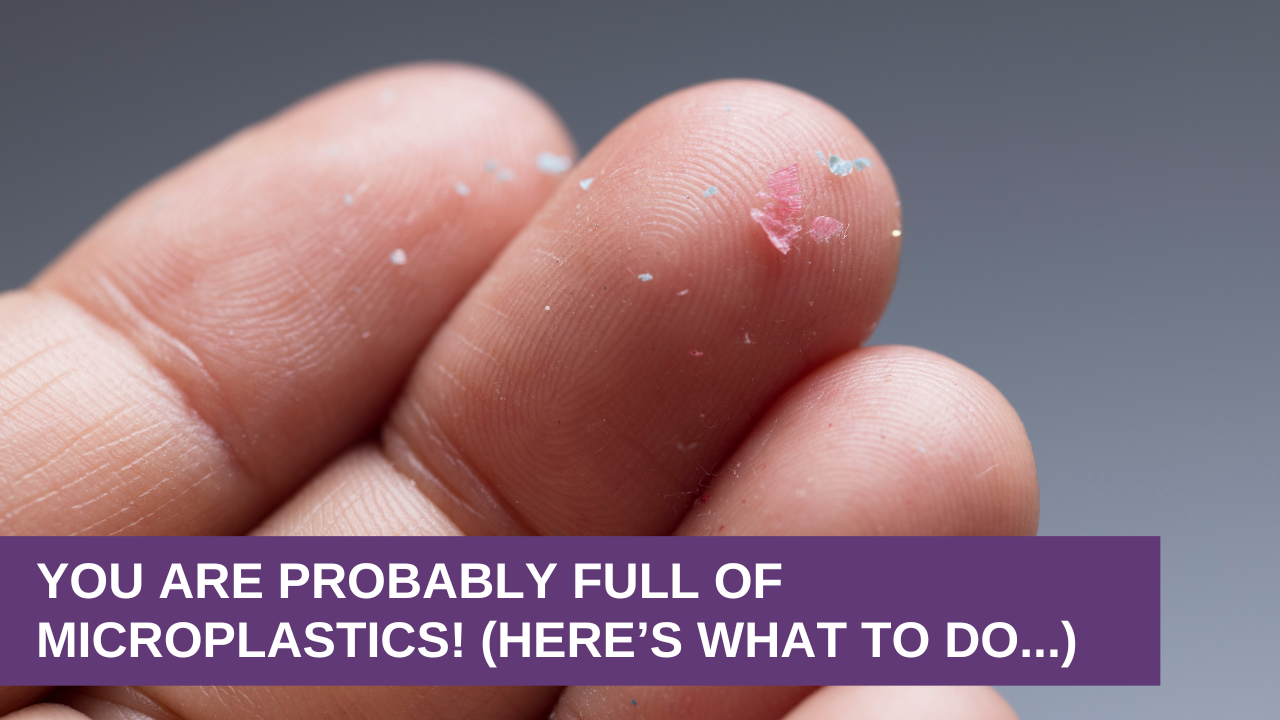Microplastics are everywhere.
Let’s talk about how they’re affecting your hormonal health.
Microplastics have been found in food, water, and even the air we breathe, and accumulate in your organs.
In the lungs, microplastics increase with age suggesting the particles persist in the body without being eliminated. Since the 1970s, the toxicity of plastics caused workers in the textile industries to develop lung function impairment, shortness of breath, inflammation, fibrosis, and lung cancer.
Exposure to plastics appears to cause changes in the composition of the intestinal microbiome.
A recent study, reported in the New England Journal of Medicine, measured the amount of microplastics collected from carotid plaques. Individuals with high levels of microplastics in the plaque had a 4 ½ times greater risk for heart attack, stroke, and mortality.
Microplastics are known endocrine disruptors. Fetuses exposed to microplastics exhibit low birthweight and delayed and impaired cognitive development.
Microplastics are linked to genital malformations in female newborns as well as diabetes insulin resistance, and polycystic over syndrome in adults.
Microplastics are small plastic particles less than 5 mm in size and can be found in plastic packaging, beauty products, water bottles, and synthetic clothing.
Microplastics infiltrate our environment. They are in the air, in the water, in the foods that we eat. There is not a person alive that does not have microplastics somewhere in their system.
Hormonally microplastics act as endocrine disruptors – filling the receptor site that hormones should be activating. Certain types of microplastics mimic estrogen-xenoestrogens and can lead to estrogen dominance. In women, these xenoestrogenic microplastics increase estrogen-related cancers, reproductive disorders, obesity, and insulin resistance. In men, xenoestrogenic microplastics induce gynecomastia, decrease testosterone levels, and can cause infertility.
Microplastics can disrupt thyroid function, including the production of thyroid hormone, as well as receptor site activity leading to hypothyroidism causing fatigue, weight gain, and slow metabolism.
Microplastics can also increase cortisol production leading to insulin resistance, interfering with adrenal functioning, causing anxiety, poor stress management, and difficulties sleeping.
So how can you reduce your exposure to microplastics?
- In your diet – avoid plastic packaging and use glass and stainless steel bottles.
- Adjust your lifestyle by switching to natural beauty products, avoiding synthetic fabrics, and using nontoxic cookware.
- In your home environment start drinking filtered water avoid plastic food storage and reduce the use of single-use plastics.
- Support your hypothalamus with Genesis Gold® to help prevent endocrine disruption of microplastics, as well as improve the detoxification of the substances from your cells. Plus Genesis Gold® supports healthy hormone balance, proper digestion, healthy gut microbiome, cellular detoxification as well as liver and kidney detoxification.
- I would also recommend a liver cleanse at least twice a year. I have an excellent liver cleanse diet available in my free Hormone Reboot Training.
These small changes can make a huge difference in protecting yourself from microplastics.




0 Comments